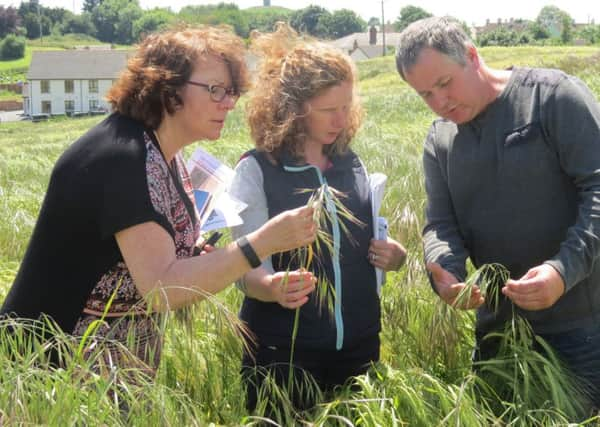Concerns on Brome grass are growing


Dr Stephen Moss from Rothamsted Research highlighted this subject when speaking at a recent arable conference in Greenmount.
In the UK, there are five main species which frequently occur as weeds of arable crops and it is important that growers identify the correct species on their farms as best practice advice from Rothamsted Research publications 2015 suggest that will dictate the differing control measures.
Advertisement
Advertisement
Use this link for more information on Rothamsted Research publications 2015 - http://www.rothamsted.ac.uk/sites/default/files/attachments/2015-12-07/Bromes%20Leaflet%20Final%20easy%20read%2011Nov15.pdf
AFBI, CAFRE and UFU have visited local farms around the province to evaluate the current situation and Growers are encouraged to communicate and discuss with CAFRE as an initial point of contact to take forward their concerns and identification of the species.
CAFRE’s advice to growers includes:
Act now - Walk crops taking note of brome and severity of populations.
Identify types – consult the AHDB publication (Information sheet 31 spring 2014 on Identification and control of brome grasses – see link https://cereals.ahdb.org.uk/media/433528/is31-identification-and-control-of-brome-grasses.pdf). If uncertain send samples through your local CAFRE crops development adviser for identification by AFBI.
Advertisement
Advertisement
Some of the most cost effective controls are cultural and include the following:
q Hand rogue if the problem is confined to a few brome plants dispersed throughout the field.
q Where brome occurs in heavily infested clumps throughout a crop consider spraying these patches now with glyphosate to avoid seed set and further brome spread.
q Prepare to use stale seedbeds post-harvest to encourage brome seeds to chit before burning off with glyphosate.
Advertisement
Advertisement
q Consider rotational changes such as a break crop or spring cropping.
UFU Deputy President Victor Chesnutt said: “If this continues to be a growing problem the UFU will continue to liaise with AFBI and CAFRE representatives to ensure help is available for all growers.”